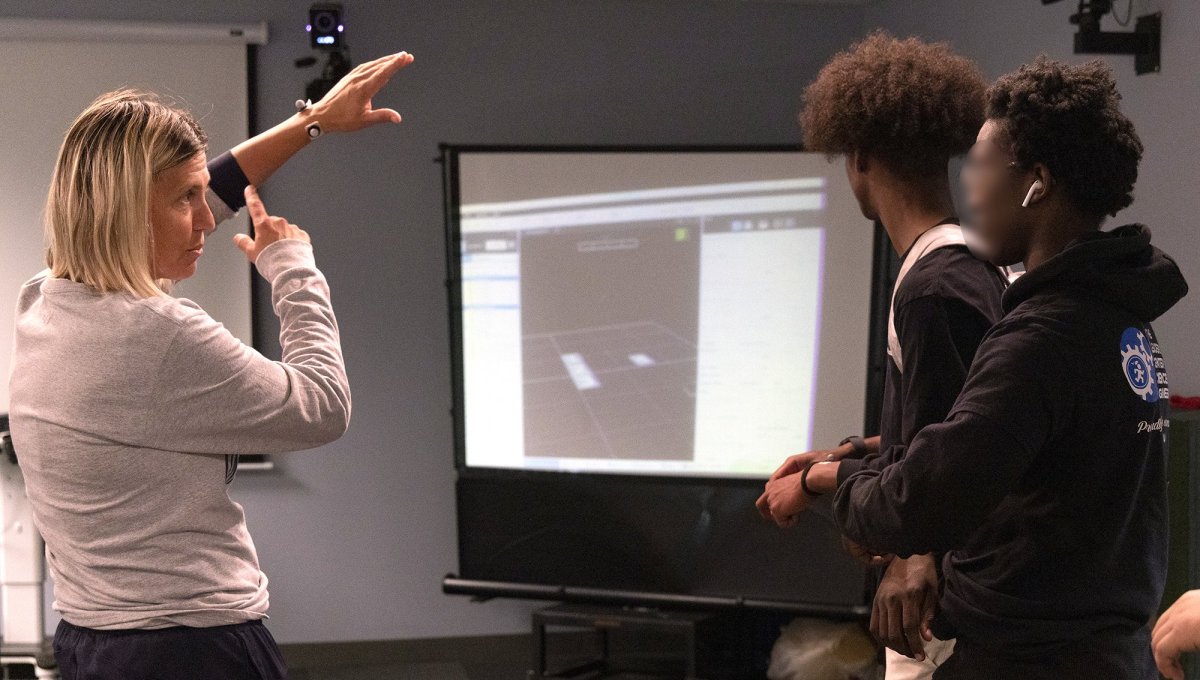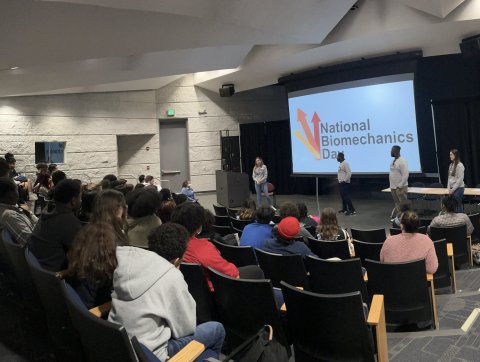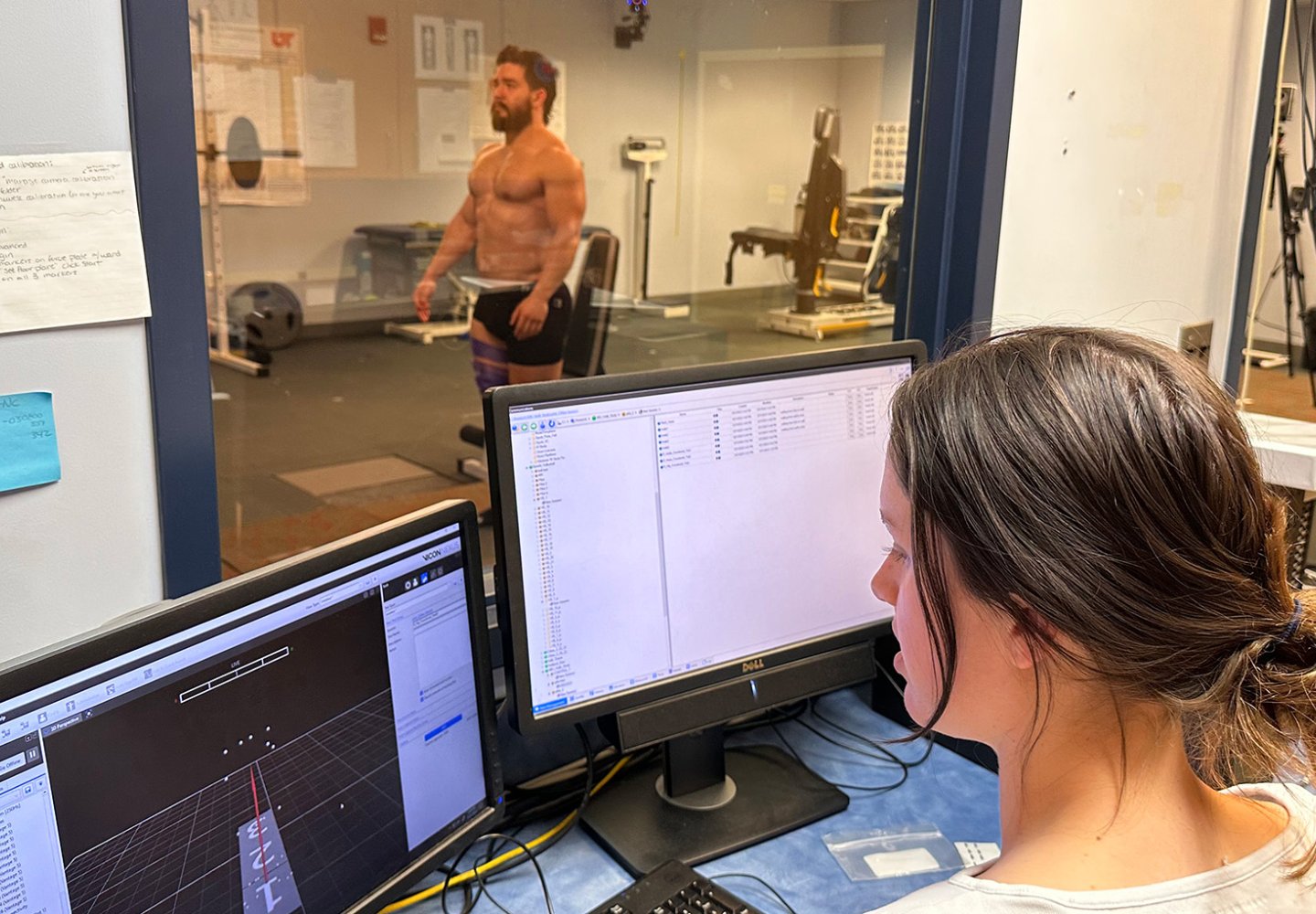Neuromechanics Lab
About
The Neuromechanics Laboratory is used to perform interdisciplinary research involving neuromuscular biomechanics. Research in the Neuromechanics lab and coursework (EXSC 417 & 727) address basic and applied questions relating to biomechanics and neuromuscular control using a combination of approaches involving kinetic, kinematic, and electromyographic analyses. The Neuromechanics Lab contains:
- A 12-camera, three-dimensional motion capture system (Vicon Vantage);
- Five force platforms (Bertec);
- A wireless electromyography system (Delsys Trigno);
- Two dynamometers (HUMAC NORM Isokinetic & handheld); and
- Office space/computers for graduate students.
Researchers and students in the Neuromechanics Laboratory often collaborate with ODU faculty in engineering, health sciences, and adapted physical education and biomechanists across the United States.
Inside the Lab
The Neuromechanics Laboratory provides comprehensive support for kinetic, kinematic, and muscular analyses under many different contexts.
Neuromechanics Lab


A female student with monitors on her thighs and calves lands from a vertical jump.


Undergraduate Involvement
Students in the undergraduate biomechanics course (EXSC 417) learn the mechanics of human movement and how to utilize all of the biomechanics research equipment in the lab. Topics covered during laboratory section meetings include: 2D and 3D motion capture, anthropometrics, dynamometry, kinetics, linear and angular dynamics, and electromyography.
Undergraduate students may also enroll in independent study hours to assist with ongoing faculty research in the Neuromechanics Lab.

Graduate Involvement
Graduate students in Human Movement Sciences take graduate coursework in biomechanics (EXSC 727 & 827), where students learn advanced topics in biomechanics, design research topics, perform data collections utilizing all of the Neuromechanics lab equipment, and analyze/interpret data. Graduate students may also perform Thesis, Dissertation, or independent studies on various topics in biomechanics.

Lab Research
Faculty and graduate student research projects in the Neuromechanics Lab have included: movement efficiency in youth with autism spectrum disorder, comparisons of hip joint center prediction methods, knee alignment and landing biomechanics in female athletes, effects of velocity-based weight training, utilizing tensiomyography to determine muscle fatigue, and musculoskeletal simulations of back squat mechanics.
Lab Director



